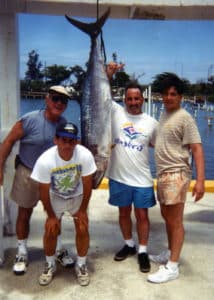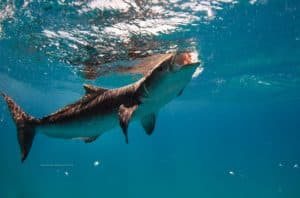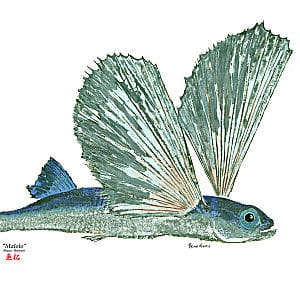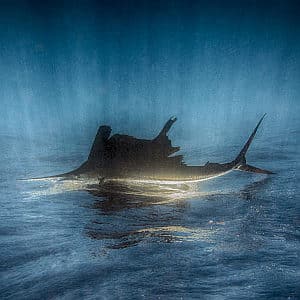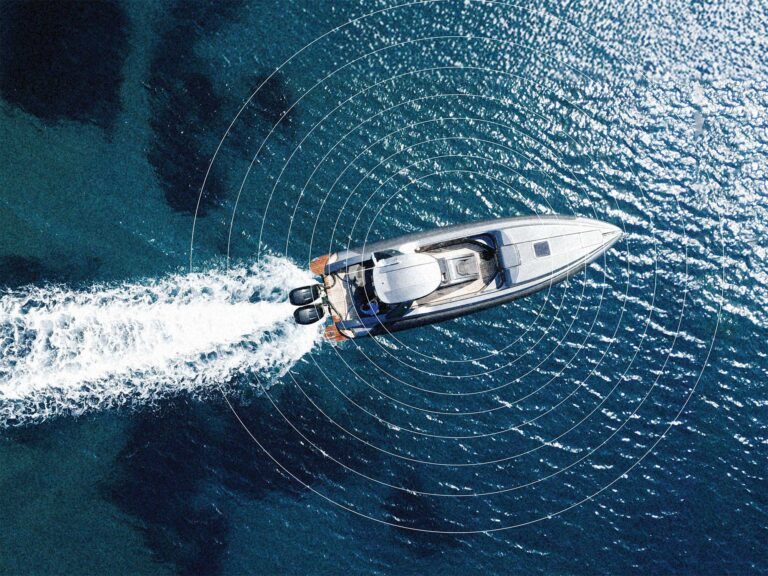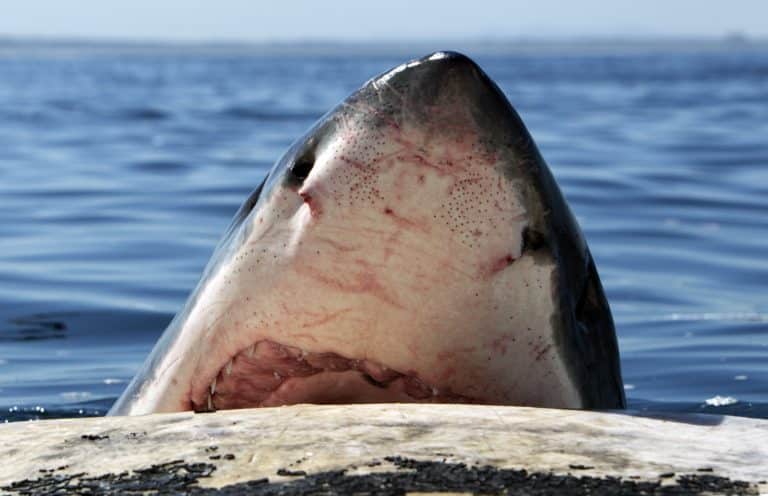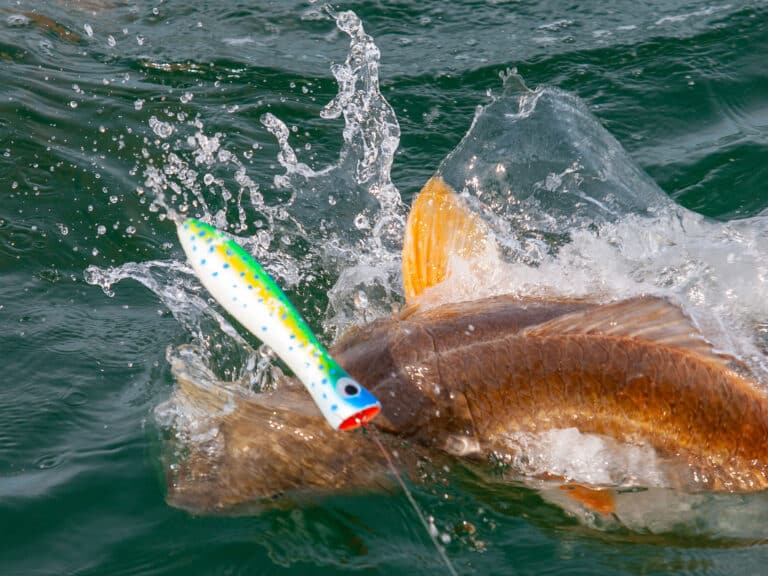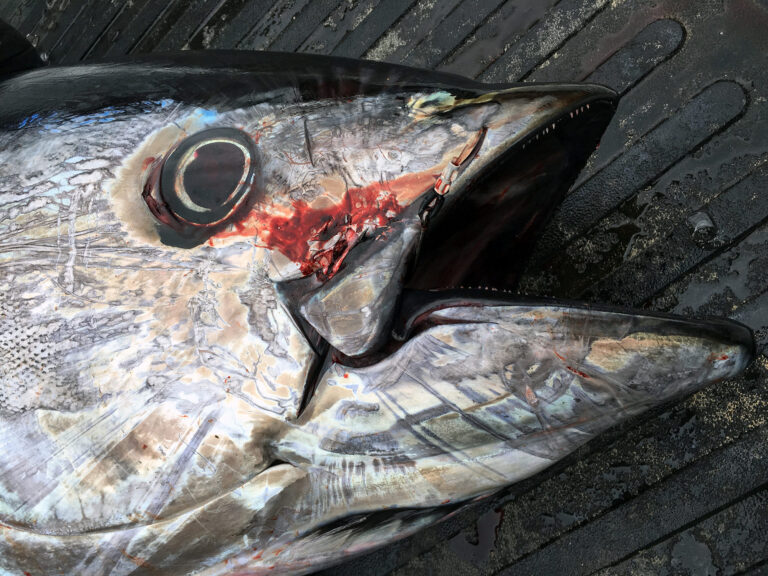Not All Fish Have Tail Fins
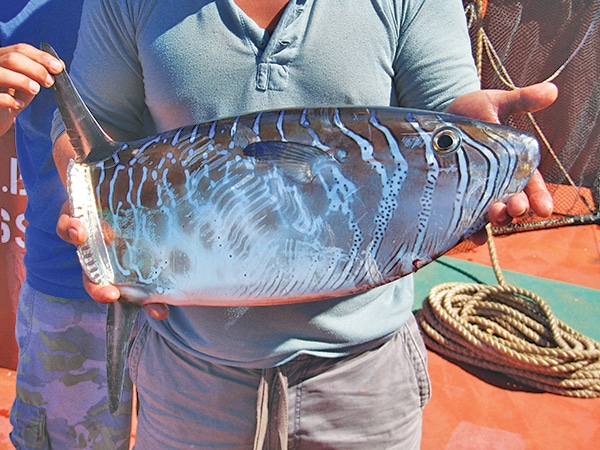
Question: About 90 nautical miles east of Paranagua, Brazil, in an area called Santos Basin — about 100 nautical miles offshore, pretty much in the middle of nowhere — we were drifting on an oil tanker, waiting to load crude oil off the platforms. While we waited, I figured I might as well do some fishing, mostly for school-size tuna and dolphin, large and small. That’s where I foul-hooked this strange fish. At first, I thought it was a half-eaten tuna. What did I catch? — Capt. Kim Aarup from Annapolis, Maryland
Answer: Kim, you snagged a slender mola, Ranzania laevis. This member of the family Molidae — the ocean sunfishes — is much smaller as an adult than other members of its family; its maximum length is about 3 feet, compared with more than 10 feet for the other three ocean sunfish species. Unlike most bony fishes, ocean sunfishes have a skeleton composed largely of cartilage. The slender mola has a circumglobal distribution in tropical and temperate waters but is relatively rare in the tropical western Atlantic.
Dr. C. Richard Robins, an eminent ichthyologist, told me that he once tried to clean an ocean sunfish and found it to be an extremely difficult task. He recommended not even considering eating one. Once believed to be planktonic (drifting) but now known to be strong swimmers that propel themselves with their dorsal and anal fins, ocean sunfishes are thought to feed largely on jellyfishes and other small, soft-bodied marine animals. — Ray Waldner
A Tiny Fish in Deep Water
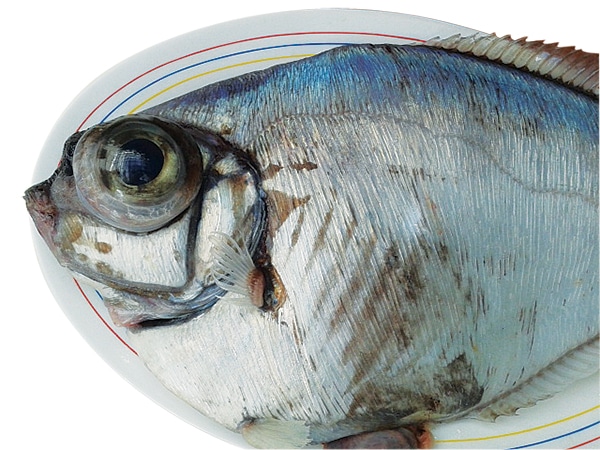
Question: I hope you can identify this fish. It was caught by a friend of mine in 3,000 feet of water in the Canary Islands, and nobody knows what it is. — Jose Luis Beistegui of Bilbao, Spain
Answer: Often our astute Fish Facts experts recognize a “mystery fish” off the top of their heads; occasionally, they have to do some research. But it’s rare indeed when one of them is stumped, and even more unusual when they end up collaborating in a fit of head-scratching. Such was the case for this odd little critter from the Canaries. After some fascinating ichthyologic give-and-take by email among Ben Diggles, Mike Fahay, Milton Love and Ray Waldner, it was Fahay who nailed it, identifying the fish as Grammicolepis brachiusculus — the thorny tinselfish.
Fahay noted the wavy lateral line and vertically elongated scales, among other indicators. That quickly got buy-in from the rest, and the jury was in. Not much is known about this species but, for the record, the thorny tinselfish is apparently found from about 1,000 to more than 3,000 feet. It can reach about 2 feet in length and is found in most of the world’s oceans. To consider it a rare catch would be more than an understatement. — Ed.
Grouper from Venezuela
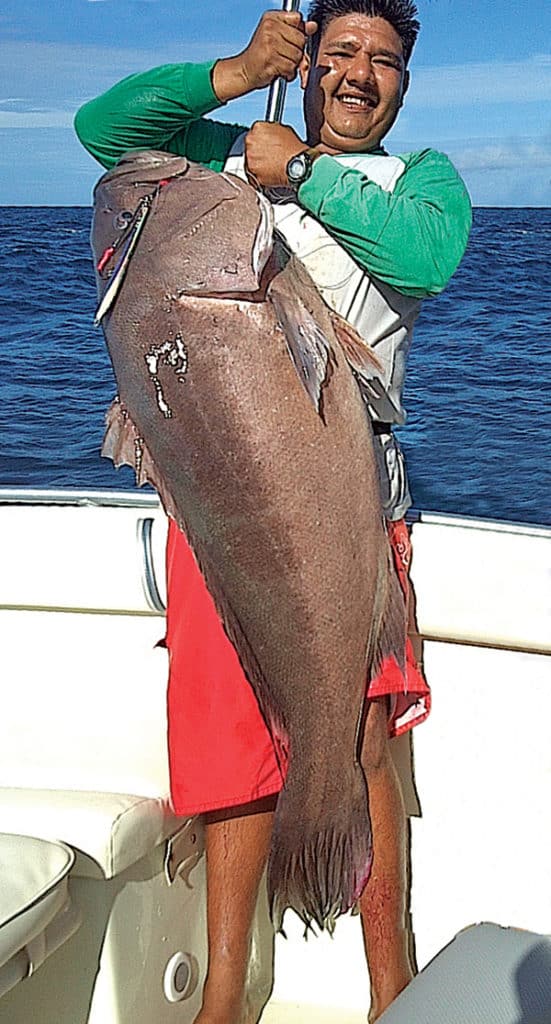
Question: Can you identify this grouper? My friend caught it on La Guairá Bank in 300 feet of water while jigging. It looks like a scamp, but it’s too big to be that species. — Dario Brillembourg from Caracas, Venezuela
Answer: Groupers can be difficult to identify from photographs, due to variations in coloration and pattern displayed by the members of their family (Epinephelidae, formerly Serranidae). However, based on the location of your catch, its size and physical features — including extended rays on the caudal, soft dorsal and anal fins — it appears you caught a Venezuelan or white grouper.
This little-known species was once thought to be endemic to Venezuela but has now been reported from Jamaica as well; it’s likely to be even more widely distributed in the Caribbean. The Venezuelan grouper is known to reach a length of nearly 4 feet. While juveniles commonly inhabit shallow-water areas, adults have been reported from as deep as 130 feet. This means that your friend’s catch might be the deepest currently reported for this species. The Venezuelan grouper is said to be excellent eating, but other members of the genus Mycteroperca have been responsible for ciguatera poisonings. — Ray Waldner
Emperor Fooled on a Jig
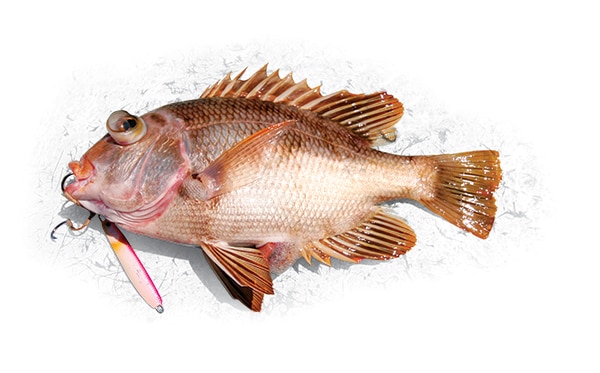
Question: I caught this in the Maldives in the early 2000s, but I can’t identify it. — Wong Kai Zgee of Singapore
Answer: Although the barotrauma makes it harder to identify, this looks very much like a longfin emperor, Lethrinus erythropterus. This species occurs throughout the Indo-West Pacific from East Africa to Papua New Guinea and the Caroline Islands, and can be distinguished from several similarly appearing lethrinids by its tail fin, which has rounded tips and is only slightly forked, and its rusty brown/red body with red on the lips and the base of the pectoral fins.
Longfins occur over coral reefs and adjacent sandy areas in ones or twos or small groups. They feed on echinoderms, mollusks, crustaceans and small fish, and grow to around 4 pounds. — Ben Diggles
Fat Sleeper Caught in a Ditch
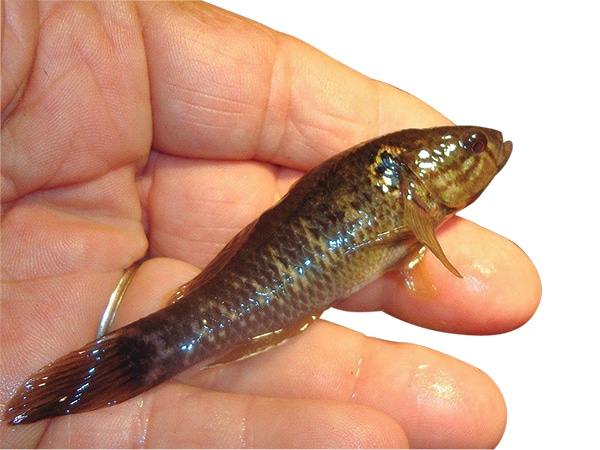
Question: These were caught in a tidal ditch at Dauphin Island, Alabama. They were about 2½ inches long. We caught them easily in a minnow trap along with sailfin mollies and what the natives call “bull minnows.” I believe there are at least two different species. — Bill Pennington of Collinsville, Mississippi
Answer: Bill, these little fellows are called fat sleepers, Dormitator maculatus. They are truly tough, thriving in fresh to brackish water under the harshest of conditions. The sleepers are related to the better-known gobies, but unlike gobies, their pelvic fins aren’t fused to form a sucking structure. There are three species in the northern Gulf area, all of which occur from the lower Atlantic coast, throughout most of the Gulf, and south to Brazil. They are reported to reach a foot in length, but I’ve never seen one more than a few inches long.
The fat sleeper is distinguished from the other two species with which it occurs (the large-scaled spinycheek sleeper, Eleotris amblyopsis, and the emerald sleeper, E. smaragdus) by the bright, blue-green blotch above the base of the pectoral fin. Because they are such tough customers, they do very well in aquaria, and what they lack in bright colors, they compensate with outgoing personalities. — Bob Shipp
A Baja California Algae Eater
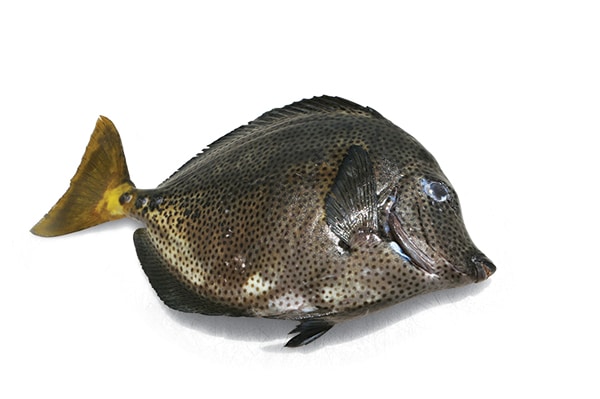
Question: While casting surface plugs off San Carlos, Mexico, we drifted across this little guy, floating dead on the surface. I’ve never seen one before. Any idea what it is? It certainly had a tiny mouth full of little, sharp teeth! — Capt. Fernando Almada of San Carlos, Mexico
Answer: Fernando, that pointy-headed fish is the yellowtail surgeonfish, Prionurus punctatus, a relatively small (to 24 inches long) tropical algae eater. They live along the outer coast of southern Baja California, and throughout the Gulf of California (they are uncommon in the northernmost part, however) and south to Ecuador. This is a nearshore species (found from just barely subtidal waters to a depth of about 100 feet) that grows to about 24 inches long. I see them mainly on boulder and coral fields, usually in small schools, and usually pecking away on the hard surfaces.
Like all other surgeonfishes, this species carries a series of very sharp spines just anterior of the tail fin; I can tell you from experience that handling one invites a very serious cut. In some species, these spines are venomous but, fortunately, that does not seem to be the case with this one. — Milton Love
Fish Identification Experts
Sport Fishing relies on a host of different Fish Facts experts. Since this is an updated story, some of the scientists originally utilized may have retired or even passed away. At the time of initial publishing, our main experts included:
- Mike Fahay, Sandy Hook Marine Lab, New Jersey
- Ray Waldner, Ph.D., Palm Beach Atlantic University
- Bob Shipp, Ph.D., University of South-Alabama
- Milton Love, Ph.D., University of California at Santa Barbara
- Ben Diggles, Ph.D., Queensland, Australia, digsfish.com
- Eric Prince, Ph.D., NOAA Fisheries Lab

